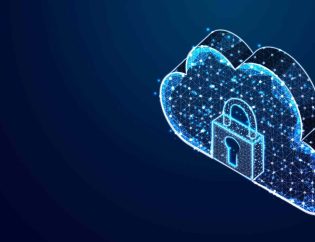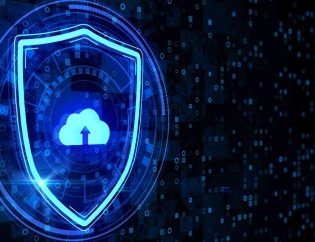
Table of Contents
Introduction
Understanding Cloud Security and Cloud Computing
Challenges in Keeping Cloud Systems Safe
Difference Between Cloud Security and Cloud Computing
The Importance of Cloud System Security in Businesses
How Technology Helps Businesses Grow
Comparison Table: Cloud Security vs. Cloud Computing
Industry-Specific Security Requirements
Future Trends in Cloud Technology and Security
Conclusion
FAQS
Introduction
Cloud technology helps businesses work faster and store data easily. Cloud computing makes it simple to access information, while cloud security keeps it safe from hackers. Using both together ensures smooth work, strong protection and follows rules, helping businesses stay safe and efficient in the digital world.
Understanding Cloud Security and Cloud Computing
Cloud computing helps businesses use the internet for important services like storage, servers, databases and software. It saves money by reducing the need for expensive hardware. Companies can easily scale their operations, improve teamwork and use different applications without buying extra equipment.
Cloud security is a way to keep cloud systems and data safe from cyber threats. It includes rules, tools and security measures to stop hackers and protect important information. Cloud security makes sure data stays safe, correct and available only to authorized users.
Benefits of Cloud Computing:
- Saves money: No need for costly physical hardware.
- Scales easily: Adjust resources as needed.
- Supports remote work: Employees can access data from anywhere.
- Works with many apps: Easily connects with different software.
- Updates automatically: Keeps systems secure and up to date.
Important Parts of Cloud Security:
- User Access Control: Decides who can see and use data.
- Encryption: Changes data into a secure code to protect it.
- Threat Detection: Finds and stops security risks.
- Compliance: Helps businesses follow safety rules and laws.
- Firewall Protection: Blocks harmful attacks and viruses.
- Security Audits: Checks for weaknesses and fixes them.
Challenges in Keeping Cloud Systems Safe
Protecting business data from cyber threats is essential in today’s digital world. However, many organizations face difficulties in securing their cloud systems. Understanding these challenges can help businesses take the right steps to improve security.
Major Security Challenges in Cloud Environments:
- Data Breaches: Cybercriminals can gain unauthorized access to sensitive company data, leading to financial losses and reputational damage.
- Regulatory Compliance Issues: Businesses must follow strict security rules, such as GDPR and HIPAA, to protect customer information and avoid penalties.
- Misconfigurations: Incorrect security settings can leave cloud environments vulnerable to hackers and malware attacks.
- Insider Threats: Employees, contractors, or business partners with access to cloud systems can misuse their privileges, intentionally or accidentally exposing critical data.
- Weak Identity Management: Poorly managed user access can allow attackers to steal login credentials and gain control over cloud resources.
- Lack of Visibility: Businesses often struggle to monitor cloud activity in real time, making it harder to detect security breaches.
- DDoS Attacks: Cybercriminals may overload cloud servers with excessive traffic, causing service disruptions and downtime.
Difference Between Cloud Security and Cloud Computing
Cloud security keeps cloud systems safe from cyber threats. It protects data, ensures privacy and follows security rules. It includes tools like encryption, firewalls and access controls. Cloud computing provides services like storage, servers and software over the internet, making business operations more flexible and cost-effective.
- Main Purpose: Cloud security protects data, while cloud computing provides services.
- Focus Area: Security keeps information safe, while computing offers IT resources like servers and software.
- Risk Protection: Security prevents hacking, malware and data leaks using strong security tools.
- Business Benefits: Security helps businesses follow rules like GDPR and HIPAA, while computing improves productivity and saves costs.
- Safety vs. Performance: Cloud security keeps businesses secure, while cloud computing makes work easier and faster.
Both are important—cloud security ensures businesses can safely use cloud computing without risking sensitive data.
The Importance of Cloud System Security in Businesses
As businesses increasingly use cloud technology, cyber threats are also growing. Organizations must implement strong security measures to protect valuable data and prevent cyberattacks. Without proper safeguards, sensitive information can be exposed, leading to financial losses and reputational damage.
Why Secure Cloud Systems Matter:
- Data Protection: Prevents unauthorized access and safeguards confidential information.
- Regulatory Compliance: Ensures adherence to security laws like GDPR, HIPAA and ISO standards to avoid legal issues.
- Threat Prevention: Reduces risks from ransomware, phishing attacks and malware infections.
- User Trust: A well-protected cloud system builds customer confidence and strengthens brand reputation.
How Technology Helps Businesses Grow
Technology plays a key role in helping businesses work faster, save costs and stay competitive. It allows companies to manage data efficiently, improve teamwork and quickly adapt to market changes. With the right tools, businesses can streamline operations and expand easily.
Key Benefits:
- Cost Savings – Reduces spending on hardware and maintenance.
- Scalability – Expands as business needs grow.
- Higher Productivity – Automates tasks for better efficiency.
- Remote Access – Enables secure work from anywhere.
- Improved Collaboration – Simplifies communication and file sharing.
Comparison Table: Cloud Security vs. Cloud Computing
| Feature | Cloud Security | Cloud Computing |
| Primary Focus | Protecting cloud data | Delivering cloud services |
| Key Elements | IAM, encryption, threat detection | Storage, servers, applications |
| Risk Factor | Cyber threats & breaches | Downtime & performance issues |
| Compliance | Ensures regulatory adherence | Provides infrastructure |
Cloud security and cloud computing both play vital roles in business success. While cloud computing boosts efficiency, cloud security ensures data protection. Finding the right balance is key. ☁️🔒 #CloudSecurity #CloudComputing
— Hyper Secure (@HyperSecure) February 24, 2025
Customer Testimonial
“Since implementing advanced cloud security and cloud computing strategies, our organization has experienced enhanced performance and reduced cybersecurity risks. Hyper Secure’s solutions have been instrumental in maintaining a secure and scalable infrastructure.” – IT Director, TechCorp
Industry-Specific Security Requirements
Different industries have unique security needs based on regulations and risks. Businesses must follow strict guidelines to protect data and maintain trust.
Key Industry Needs:
- Healthcare – Must follow HIPAA rules to protect patient data and ensure privacy.
- Finance – Requires strong risk management and secure transactions to prevent fraud.
- E-Commerce – Needs fraud protection and secure payment systems to safeguard customer information.
- Government – Enforces strict data policies to protect national security and sensitive records
Future Trends in Cloud Technology and Security
The cloud landscape is rapidly evolving, with emerging trends reshaping how businesses operate and protect their data. Companies must stay updated with the latest advancements to enhance efficiency and security.
Key Trends:
- Zero Trust Security Models – Ensures strict verification, eliminating implicit trust in networks and users.
- AI-Driven Threat Detection – Uses artificial intelligence to analyze patterns and detect cyber threats in real time.
- Hybrid and Multi-Cloud Strategies – Organizations are adopting a mix of private, public and multiple cloud providers for flexibility and reliability.
- Edge Computing and IoT Security – With more connected devices, securing data at the edge is crucial to prevent cyber risks.
Conclusion
In today’s digital world, both technology and security play a vital role. While cloud solutions help businesses grow with flexibility and scalability, strong protection measures keep data safe and meet legal requirements. To succeed, companies must find the right balance—using advanced technology while ensuring security to reduce risks and stay compliant.
How Hyper Secure Helps
Hyper Secure offers cloud security solutions that protect businesses from growing cyber threats. Our advanced tools for detecting threats, encryption, compliance management and access control help keep your cloud safe and secure. With Hyper Secure, businesses can move to the cloud with confidence, knowing their security is fully protected.
FAQs
What are the key elements of protecting cloud environments?
Key elements include encryption, identity management, access controls, threat detection and ensuring regulatory compliance.
How does cloud computing streamline business functions?
It enhances scalability, reduces IT costs, facilitates remote work and improves collaboration across teams and departments.
How does cloud security support remote work?
Cloud security ensures that remote employees can securely access and collaborate on company data while maintaining privacy and compliance.
How does Hyper Secure help businesses stay compliant?
We ensure that businesses adhere to key regulations like GDPR and HIPAA through secure infrastructure and ongoing security assessments.
Why is encryption important in cloud protection?
Encryption ensures that sensitive data is unreadable to unauthorized users, providing an extra layer of security for information stored and transmitted in the cloud.








